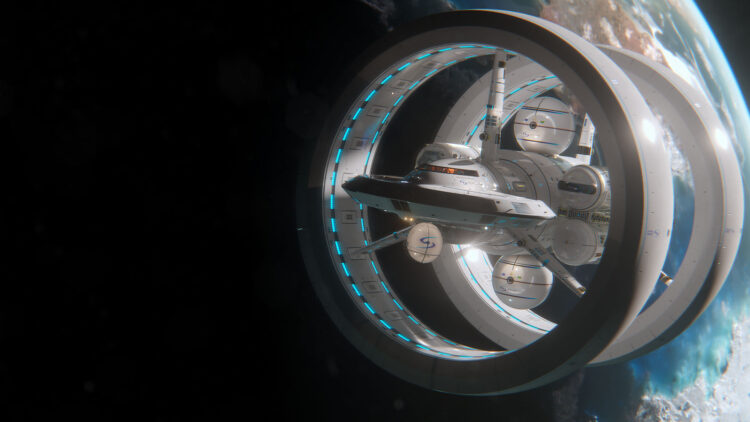The dream of faster-than-light travel has long been confined to the wondrous realms of science fiction, but recent advancements in theoretical physics and engineering are bringing this ambitious concept closer to reality. Celebrating the legacy of Austrian physicist Albert Einstein, who laid foundational theories in physics, scientists are revisiting his ideas to explore the feasibility of warp drives—hypothetical engines that could bend the fabric of space-time.
With brand new developments on the horizon, NASA and other researchers are positioned to turn this sci-fi fantasy into a tangible reality.
Warp drive research: The vision of faster-than-light travel that could shift paradigms
In 1994, Mexican physicist Miguel Alcubierre introduced a revolutionary model for faster-than-light travel, proposing that a spacecraft could create a “warp bubble” around itself. This bubble would be able to compress space in front of the craft while expanding it behind. This would enable the vessel to effectively move faster than light without ever breaching the laws of physics.
Despite its premise, the original concept of the Alcubierre warp drive relied on “exotic matter” with negative energy density—an elusive substance that remains undiscovered. Fortunately, recent studies have sparked optimism by presenting alternative models that do not depend on exotic matter.
Researchers from the University of Alabama in Huntsville, along with experts from the Applied Physics research think tank, have developed a concept called the “Constant Velocity Subluminal Warp Drive.” This new approach uses a combination of traditional and novel gravitational techniques, allowing for high-speed travel within the established frameworks of physics while sidestepping the complications of negative energy.
Lead author Jared Fuchs emphasized that their findings mark a shift in the conversation surrounding warp drives, indicating that they may no longer be confined to fiction.
Warp drive: Advancements in theoretical models
The warp drive concept hinges on creating a stable warp bubble that can transport objects at speeds just below light.
This model shows promise, as it’s consistent with our current understanding of physics and suggests practical energy needs compared to previous theories. To support further exploration, the “Warp Factory,” an online toolkit, has been launched to allow researchers to simulate and enhance warp drive designs.
This virtual platform is likened to a “wind tunnel” for warp technology, potentially speeding up scientific progress.
Challenges ahead: New possibilities or a reality check?
Despite this progress, the path to a functional warp drive remains fraught with obstacles. Practical implementation requires overcoming huge challenges, including energy optimization and reliability of warp bubble creation.
As such, many experts warn that, while the theoretical groundwork is being laid, the construction of a real-world prototype may still be centuries away. Critics also point out that while the physics of warp drives is becoming increasingly credible, the actual realization of such technology is a monumental task.
As scientists continue to explore the frontiers of space-time physics, the possibilities for warp drives represent a bright glimpse into the future of space exploration. While we may not be on the brink of interstellar voyages just yet, the strides made in recent years are setting the stage for a new era of possibilities.
By building on Einstein’s predictions and the innovative ideas of contemporary physicists, humanity could eventually bridge the vast distances between the stars.
Evidently, the pursuit of a faster-than-light spacecraft—once deemed impossible—is moving closer to fruition, thanks to new theoretical models and engineering efforts. While hurdles remain, the ongoing research inspires hope for interstellar travel. With determination and grit, the dream of exploring distant galaxies may one day become a reality, reminding us that what was once merely science fiction could morph into fact.

